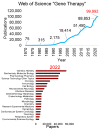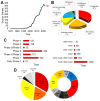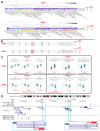Gene Therapy for Genetic Syndromes: Understanding the Current State to Guide Future Care
- PMID: 38247731
- PMCID: PMC10801589
- DOI: 10.3390/biotech13010001
Gene Therapy for Genetic Syndromes: Understanding the Current State to Guide Future Care
Abstract
Gene therapy holds promise as a life-changing option for individuals with genetic variants that give rise to disease. FDA-approved gene therapies for Spinal Muscular Atrophy (SMA), cerebral adrenoleukodystrophy, β-Thalassemia, hemophilia A/B, retinal dystrophy, and Duchenne Muscular Dystrophy have generated buzz around the ability to change the course of genetic syndromes. However, this excitement risks over-expansion into areas of genetic disease that may not fit the current state of gene therapy. While in situ (targeted to an area) and ex vivo (removal of cells, delivery, and administration of cells) approaches show promise, they have a limited target ability. Broader in vivo gene therapy trials have shown various continued challenges, including immune response, use of immune suppressants correlating to secondary infections, unknown outcomes of overexpression, and challenges in driving tissue-specific corrections. Viral delivery systems can be associated with adverse outcomes such as hepatotoxicity and lethality if uncontrolled. In some cases, these risks are far outweighed by the potentially lethal syndromes for which these systems are being developed. Therefore, it is critical to evaluate the field of genetic diseases to perform cost-benefit analyses for gene therapy. In this work, we present the current state while setting forth tools and resources to guide informed directions to avoid foreseeable issues in gene therapy that could prevent the field from continued success.
Keywords: clinical trials; gene therapy; genetic syndromes.
Conflict of interest statement
The authors declare no conflicts of interest.
Figures










References
Publication types
LinkOut - more resources
Full Text Sources
